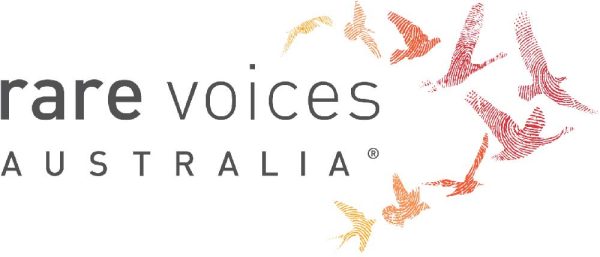Sarcoidosis
Quick Search
- Summary
- Synonyms and Classifications
- Symptoms
- Disability Impacts
- Cause and Inheritance
- Diagnosis
- Treatment
- Clinical Care Team
- Clinical Care Guidelines
- Emergency Management
- Research
- Rare Disease Organisation(s)
- Lived Experience
- Support Services and Resources
- Mental Health
- Other Information
- Useful Links for Healthcare Professionals
Summary
Sarcoidosis is a condition characterised by formation of granulomas (clusters of immune cells) in multiple organs of the body.1 These granulomas can affect the structure and function of those organs.2 The lungs and lymphatic system are typically affected, but these granulomas also commonly form in the eye, skin, joints, heart, and kidney, and can essentially be found in any organ of the body.3 The exact cause of sarcoidosis is still unknown. There is a wide range of symptoms that have been associated with sarcoidosis, which often depend on the organs that are affected.4 Whilst some individuals may experience little to no symptoms, others may develop life-threatening complications. Sarcoidosis may resolve itself after 1-3 years, or may persist longer and become a chronic condition.3,5
Synonyms and Classifications
Synonyms: Besnier-Boeck-Schaumann disease; besnier-Boeck-Schaumann syndrome; Boeck sarcoid; Boeck’s sarcoid; Boeck’s sarcoidosis; Darier-Roussy sarcoid; lymphogranulomatosis; sarcoid.4
Universal rare disease classifications provide a common language for recording, reporting and monitoring diseases. Please visit the Rare Disease Classifications page for more information about these internationally recognised classifications.
Symptoms
The range of symptoms and severity of sarcoidosis can vary widely between individuals.3 As sarcoidosis can affect any organs, the symptoms may depend on the organs that are affected.3,4 Sarcoidosis can resolve itself after 1-3 years or can persist longer and be chronic.3,5
General symptoms of sarcoidosis include fatigue, weight loss, fever and night sweats.3,6,7 Sarcoidosis typically affects the body’s lymphatic system resulting in enlarged lymph nodes, as well as the lungs (pulmonary sarcoidosis/sarcoidosis of the lungs), leading to persistent dry cough, wheezing, shortness of breath and chest pains.5,8 Sarcoidosis can also cause increased blood and urinary calcium levels, which can lead to development of kidney stones.6
Other common symptoms of sarcoidosis corresponding to the affected organs, may include but are not limited to:1,3-7,9
- skin – small reddish-brown lumps or purplish, raised lumps on the face, trunk of body and extremities (fingers and toes)
- musculoskeletal – swelling and pain affecting the muscle, joints and bones
- eyes – redness, blurred vision, pain, sensitivity to light
- heart – chest pains, irregular heartbeat
- nervous system – dizziness, seizures, nerve pain mood swings, nerve paralysis
Some individuals with lung sarcoidosis may develop interstitial lung disease (ILD), which involves scarring of lung tissue (pulmonary fibrosis).8 Advanced pulmonary fibrosis can at times lead to respiratory failure and pulmonary hypertension.5 Other life-threatening complications of sarcoidosis include cardiac (heart) disease and irreversible organ damage to the brain, eyes or kidneys.5,9
Please speak to your medical team to learn more about the symptoms and complications of sarcoidosis.
Disability Impacts
Rare diseases are often serious and progressive, exhibiting a high degree of symptom complexity, leading to significant disability. Majority of the estimated two million Australians living with a rare disease meet the Australian Government’s definition for disability (in accordance to the Australian Public Service Commission and Australian Bureau of Statistics), and many experience severe and permanent disability impacts. If you or someone you care for is experiencing disability-related impacts from a rare condition, please speak with a health or disability professional for advice. Information about relevant disability support can be found at the RARE Portal’s Disability Support Information page.
Cause and Inheritance
The exact cause of sarcoidosis is unknown. The body’s immune system responds to an unknown trigger and produces the granulomas and inflammation.6 It is thought that the triggers may include environmental factors and/or may have a genetic component.3,7
Diagnosis
A diagnosis of sarcoidosis is typically made based on three criteria:1,3-5
- signs and symptoms of sarcoidosis – this may involve a physical examination, imaging scans of the chest to look for scarring, blood tests, lung function tests, as well as examination of the heart and eyes
- presence of granulomas in tissue samples – this may be done through a needle biopsy to obtain body tissue samples to be analysed in the laboratory
- ruling out (exclusion) of other conditions that have similar symptoms (differential diagnosis), such as certain infections, some types of cancers, Crohn’s disease, chronic beryllium disease, common variable immunodeficiency, granulomatosis with polyangiitis, drug-induced granulomatosis, and others
Please speak to your medical team to learn more about the available diagnostic pathways for sarcoidosis.
Treatment
For some individuals, their sarcoidosis may resolve by itself without any treatment.1,6 For others, treatment is required and aimed at improving quality of life and reducing risk of complications.9 Treatment may include medication such as corticosteroids, immunosuppressive drugs and anti-inflammatory drugs. Other types of treatment may depend on the organs that are affected and the associated symptoms and complications. The doctor may also recommend lifestyle changes such as exercise, avoiding too much sun, dietary requirements and no smoking, if relevant and necessary.1,4,8
Please speak to your medical team to learn more about the possible treatment or management options for your condition. Treatment will depend on an individual’s specific condition and symptoms. It is also important to stay connected to your medical team so that you can be made aware of any upcoming clinical trial opportunities.
Clinical Care Team
Clinical care for rare diseases often involves a multidisciplinary team of medical, care and support professionals. Please note that the information provided here is as a guide and that RVA does not necessarily monitor or endorse specific clinics or health experts.
Healthcare professionals involved in the treatment of sarcoidosis may include general practitioners (GP), cardiologists, endocrinologists, nephrologists, neurologists, ophthalmologists, pulmonologists, and rheumatologists.2 The need for different healthcare professionals may change over a person’s lifetime and extend beyond those listed here.
Clinical Care Guidelines
We are not aware of any clinical care guidelines for sarcoidosis in Australia. If you know of any relevant care guidelines, please let us know via the Contribute page.
The following guidance is available from international experts outside Australia; however, there may be information that is not relevant or applicable to the Australian context, and may not be up to date:
- European Respiratory Society (ERS) clinical practice guidelines on treatment of sarcoidosis – recommendations developed by European Respiratory Society Task Force committee composed of clinicians, methodologists and patients with experience in sarcoidosis, based on the GRADE (Grading of Recommendations, Assessment, Development and Evaluations) methodology; published in 2021
- Diagnosis and Detection of Sarcoidosis: An Official ATS Clinical Practice Guideline Implementation Tools – recommendations developed by American Thoracic Society (ATS) using the GRADE approach; published in 2020
Emergency Management
Individuals living with rare diseases may have complex medical issues and disabilities, which are not always visible. It is often useful to refer to their medical history as well as personal information such as a medical card, doctor’s letter, or if available, a rare disease passport, for relevant information.
It may be important to consider the following when managing individuals living with sarcoidosis at emergency departments/services:
- sarcoidosis is a multisystem condition and can affect any organ in the body5
- in some cases, sarcoidosis can cause organ damage with life-threatening complications affecting the lungs, heart, eyes, brain, and kidneys9
Research
Sarcoidosis Advocacy & Research Initiative is a multi-disciplinary initiative at University of New South Wales (UNSW) to advocate on behalf of all Australian sarcoidosis patients for greater recognition of this condition and greater support for research on improved methods of diagnosis, management and cure.
Centre for Research Excellence in Pulmonary Fibrosis is a national research centre for pulmonary fibrosis. Some individuals with lung sarcoidosis may have pulmonary fibrosis.8
There are specific considerations around participating in rare disease research, including clinical trials. It is important to be mindful of issues such as data privacy, research ethics, consent and differences in research regulations between Australia and other countries.
If you are interested in finding clinical trials for your condition, please visit the following websites; however, there may not be any clinical trials available:
It is best to discuss your interest in any clinical trials with your medical team to determine suitability and eligibility.
Please note that RVA does not necessarily monitor or endorse each group/organisation’s operational governance and activities.
Rare Disease Organisation(s)
International Organisation:
Foundation for Sarcoidosis Research (United States of America)
Website: https://www.stopsarcoidosis.org/
The Foundation for Sarcoidosis Research (FSR) is the leading international organisation dedicated to finding a cure for sarcoidosis and improving care for sarcoidosis patients through research, education, and support.
Please note that RVA does not monitor or endorse each group/organisation’s operational governance and activities. When engaging with a group, please consider the information on the RARE Portal’s Finding Helpful Peer and Community Supports page.
Lived Experience
Sarcoidosis varies between individuals, and each person’s experience is unique.
If you would like to share your personal story with RVA, please visit the Rare Voices Australia: Share Your Story page. RVA will consider your story for publishing on our website and inclusion on the RARE Portal.
Support Services and Resources
The following support services may be relevant for individuals with sarcoidosis of the lungs:
For information on available government and social services that provide support for individuals with a rare disease, please visit the National and State Services pages.
Mental Health
People living with a rare disease, including families and carers, often face unique challenges such as diagnostic delays, misdiagnoses, limited treatment options, and limited access to rare disease specialists and support. These challenges may impact people’s emotional wellbeing and quality of life. Many people find it helpful to seek mental health and wellbeing support to cope with ongoing stress and uncertainty. Connecting with people who have shared experiences through a support group may also be helpful. Information about relevant mental health and wellbeing support can be found at:
- Mental Health and Wellbeing Support for Australians Living with a Rare Disease
- The National and State Services pages underneath the ‘Mental Health’ sections listed
Other Information
Further information on Sarcoidosis can be found at:
Useful Links for Healthcare Professionals
References
- healthdirect. Sarcoidosis. Last reviewed July 2023. Accessed 3 February 2025. https://www.healthdirect.gov.au/sarcoidosis
- Genetic and Rare Diseases (GARD) Information Center. Sarcoidosis. Updated February 2025. Accessed 3 February 2025. https://rarediseases.info.nih.gov/diseases/7607/sarcoidosis
- Orphanet. Sarcoidosis. Updated April 2020. Accessed 3 February 2025. https://www.orpha.net/en/disease/detail/797
- National Organization for Rare Disorders (NORD). Sarcoidosis. Last updated 13 November 2024. Accessed 4 February 2025. https://rarediseases.org/rare-diseases/sarcoidosis/
- Sève P, Pacheco Y, Durupt F. et al. Sarcoidosis: A clinical overview from symptoms to diagnosis. Cells. 2021; 10(4):766. https://doi.org/10.3390/cells10040766
- The Australasian College of Dermatologists. A-Z of skin: Sarcoidosis. Updated 27 February 2017. Accessed 4 February 2025. https://www.dermcoll.edu.au/atoz/sarcoidosis/
- Bokhari SRA, Zulfiqar H, Mansur A. Sarcoidosis. Updated 25 June 2023. In: StatPearls [internet]. Treasure Island (FL): StatPearls Publishing; 2025. Accessed 3 February 2025. https://www.ncbi.nlm.nih.gov/books/NBK430687
- Lung Foundation Australia. Sarcoidosis of the lungs. 4p. https://slhd.health.nsw.gov.au/sites/default/files/2024-03/Sarcoidosis-factsheet.pdf
- Baughman RP, Valeyre D, Korsten P, et al. ERS clinical practice guidelines on treatment of sarcoidosis. Eur. Respir. J. 2021;58(6):2004079. https://doi.org/10.1183/13993003.04079-2020
Contributors
This page has been developed by Rare Voices Australia (RVA)’s RARE Portal team.
If you are aware of any additional information that may benefit stakeholders with an interest in this page, or if you notice any broken links or inaccurate information, please let us know via the Contribute page.

